 |
North
High School Wall of Honor
John Clarence Petty, Jr.
Class of January, 1923
|
 |
 |
|
Research done by Claradell Shedd, class of 1953. PAGE IN PROGRESS |
| John Clarence Petty,
Jr. |
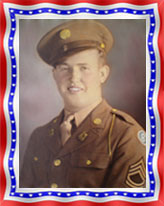 |

|
John graduated from North High in 1923. He enlisted in the
IowaNational Guard at Camp Dodge. He was a Lt. Colonel.
when he was killed in action in Tunisia on 02/12/43. |
Correct
this text... He enlisted in the US
Army on ? at Camp Dodge, Iowa. At the time of his enlistment,
was he was married.? His service number was 0281279. At
the time of his enlistment, his next of kin was listed as
his wife, Catherine Jeanette Petty, at 3842 10th Street,
Des Moines, Iowa.
He was asssigned to the First Battalion, 168th Infantry
Regiment, 34th Infantry Division, as a member of the Commando
(?) group. He was killed on February 12, 1943 during the
Tunisia campaign in North Africa. At the time of his death,
his rank was Lt. Col. |
John
Clarence Petty, Jr.
(get correct photo) |
Get
correct information for John Clarence Petty, Jr....Sequence
of relocation: 4 daughters. From DM to Camp Claiborne, LA;
6 months of Officers Training at Fort Benning, GA.; back
to Camp Claiborne where family rented a house and joined
him. Then to Tama County, IA (Marshalltown) in charge of
training Indian population. New Year's Eve to Trenton, NJ;
to Scotland and Ireland for training. To Tunisia. In combat.
Troops were falling back and he went forward to encourage
them. Gunshot wounds in stomach. Company had to move positions
of camp and hospital. Died in hospital after ten days. 02/12/43 |
|
| John Clarence Petty, Jr. |
 |
| Year |
|
Rank |
|
Status |
 |
| January,
1923 |
|
Graduated |
|
North Des Moines
High School. |
| 1925 |
|
 |
|
Enlisted. Iowa Army
National Guard; Camp Dodge, IA. |
| 1925-1928 |
x |
Personal |
x |
In California |
| 1928-date |
x |
Employment |
x |
Central National Bank in Des
Moines |
| May 26, 1928 |
|
Family |
|
Married Catherine Jeanette
Duncan in Des Moines, IA |
| aft
May 26, 1928 |
x |
Iowa National Guard/1st
Sgt. |
x |
Tama County, IA
(Marshalltown). In charge of training Indian population.
(Check sequence and timing of this event) |
| November
11, 1928 |
x |
Family |
x |
Joan Catherine Petty
born in Des Moines, IA
(North High School, January, 1946). d.02/09/96. |
| December
7, 1931 |
x |
Family |
x |
Daughter Janet Charlene
Petty born in Des Moines, IA
(North High School, January, 1950) |
| June
15, 1935 |
x |
Family |
x |
Daughter Mary Jean
Petty born in Des Moines, IA
(North High School, 1953/Tech?) d.10/26/13. |
| June
16, 1935 |
x |
Family |
x |
Daughter Martha
Jane Petty born in Des Moines, IA
North High School, 1953/Tech?) |
| February
10, 1941 |
x |
US Army |
x |
Enlisted in US Army |
| 1941 |
|
Training |
|
Camp Claiborne,
LA |
| 1942 |
x |
Training |
x |
6 months of training at Fort
Benning, GA? |
| 1942 |
x |
Training |
x |
Camp Claiborne, LA |
| 01/01/43 |
x |
Enroute |
x |
Trenton, NJ |
| date |
x |
Enroute |
x |
On transport carrier from New
York to Scotland and Ireland for training prior to deployment
to North Africa/Tunisia. |
| 02/02/43 |
x |
Injured |
x |
Shot at railway station in
? presumably by Italian troops. In combat. Troops were falling
back and he went forward to encourage them. Gunshot wounds
in stomach. Company had to move positions of camp and hospital.
Died in hospital after ten days. 02/12/43. |
| 02/12/43 |
|
Deceased |
|
Killed in action; Tunisia. |
| 02/12/43 |
x |
 |
x |
His wife, Catherine Jeanette
Petty, lived at 3842 10th Street in the Oak Park area. |
| aft February
12, 1943 |
x |
Burial |
x |
US Cemetery at Tebessa, Algeria |
| 1947-1948 |
x |
Burial |
x |
John's mother requested remains
be returned to the United States. Interred at Highland Memory
Gardens, Des Moines, IA |
|
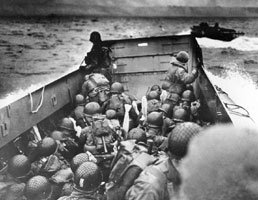 |
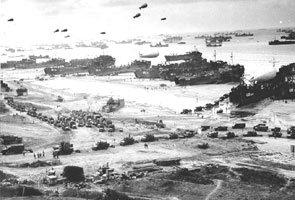 |
| Normandy
(get correct photos for N. Africa) |
Omaha Beach
(get correct photos for N. Africa) |
|
|
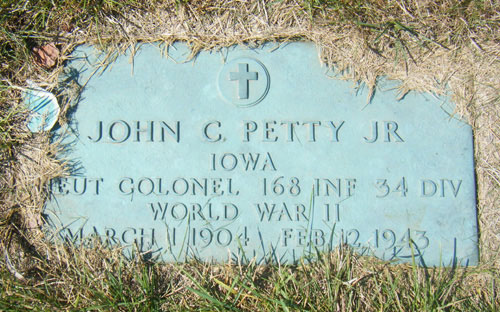 |
| Highland Memory Gardens, Des
Moines, IA |
|
| 168th Infantry Regiment;
34th Infantry Division (Red
Horse Cavalry) |
113th Cavalry Reconnaissance
Squadron
A brief history of the 113th Cavalry Reconnaissance
Squadron, 113th Cavalry Group Mechanized, XIX
Corp, 1st Army.
Intro
Why play the 113th Cavalry Reconnaissance? It's
surely not because it's an easy force to play, and it's
definitely not its overwhelming firepower. My reason for modeling
and playing the 113th is simply
because it was the unit in which Cpl. James Hall, my grandfather,
served. He was a member of Troop
E, the assault gun troop. He joined the Troop on the 28th of September
1944; crossed the Roer, Rhine,
Weser, and Elbe with them; fought on the northern shoulder of
the 'Bulge' with them; received a purple
heart for being wounded in action in Stirzilburg, Germany; and
was with the first group to meet up with
the Soviets before entering Berlin.
Origins
The 113th Cavalry Regiment originated as an Iowa
National Guard unit with history tracing back to the
19th century Indian Wars. Its distinctive coat of arms featuring
a Red Horse rampant, a prickly pear
cactus (for its service along the Mexican border), and a fleur
de lis (for its service during the WWI), has given the unit the
nickname of the "Red Horse Cavalry".
Reorganization
With its mechanization in 1944, the 113th Cavalry
was reorganized into three groups, 113th Cavalry
Headquarters, 113th Cavalry Reconnaissance Squadron, and the 125th
Cavalry Reconnaissance
Squadron. Collectively known as the 113th Cavalry Group Mechanized,
they were commanded by Col.
William S. Biddle of Portland Oregon, and a West Point graduate,
class of 1923. The 113th Cavalry
Reconnaissance Squadron was commanded by Lt. Col. Allen D. Hulse,
and the 125th by Lt. Col.
Anthony F. Kleitz.
Organization
The mechanized cavalry squadrons were organized
with three Cavalry Troops, lettered A to C, each
equipped with 13 M8 Greyhound armored cars and jeeps, an Assault
Gun Troop, E, with six M8 Scott
HMC; a Light Tank Company, F, with 17 M5 Stuarts, later replaced
with M24 Chaffee tanks; a Service
Company; and an H&H Company.
Role
Cavalry Squadrons were primarily intended for reconnaissance
missions. However, during the war
they were usually employed in defensive, security, or screening
missions. Armored field artillery,
engineer, and tank destroyer units reinforced the cavalry for
most missions.
The cavalry groups were seldom called to perform their primary
duty, and later analysis showed
that pure reconnaissance missions accounted for only 3 percent
of their activities. The lion's share of
missions included defensive operations; special operations (such
as security, road blocks, rear
screening); security missions (such as flank protections, and
filling gaps), and purely offensive
operations.
Highlights of service during the war
The 113th saw its first engagement with the Germans
in Normandy. The Cavalry put aside its
reconnaissance tactics and took on the 17th SS Panzer Grenadier
Division head on, when the Group
crossed the Vire et Taute Canal on July 7th and took the towns
of Goucherie and Le Mesnil-Veneron. It
fought amongst hedgerows against what turned out to be a German
counterattack aimed at Carentan and Isigny for four days.
With the fall of Gathemo, the 113th got a chance to stretch its
legs and really move across the
countryside. On August 13th, the group marched 32 miles to Mortain,
paused, and then set up a moving screen in front of the 30th ID
to Dornfront. Here the 125th Cavalry Reconnaissance Squadron worked
with the 82nd Armored Reconnaissance Btn in the capture of the
heavily defended 17th century fortress, while the 113th covered
a sizeable gap between two advancing infantry regiments, an action
which earned them a commendation from Division Commander, Maj.
Gen. Leland S. Hobbs.
On September 5th, the Group under the XIX Corp, and with Company
B of the 82nd Engineer Combat
Battalion and Company C of the 803rd Tank Destroyer Battalion
attached, moved on what is believed to
have been one of the most spectacular mechanized cavalry reconnaissance
missions in military history,
when it made its brilliant dash across Belgium three days in advance
of the Corps. Light, and even
moderate resistance was fought, or brushed aside, and heavy resistance,
of which there was considerable, was reported and by-passed. All
types of enemy fron Panther tanks to infantry were encountered.
Messenger service was maintained by plane and communications by
long-distance radio.
During the 'Bulge', the group was primarily responsible for flank
protection in the Maastricht-Aachen-
Ligen area. The group remained on its defensive mission in the
Geilenkichen area until shortly after
Christmas, when they moved to the area of Gey, on the northern
edge of the Hurtgen forest. While
defending this particular sector, the group patrolled aggressively,
and during the night of January 19-
20, Troop 'C', 113th Cavalry Reconnaissance Squadron conducted
a raid across the Roer, returning with
six prisoners, the first prisoners taken on the Corps front in
three weeks.
The 113th were the first units across the Roer, the Elbe, the
Rhine, the Ruhr, and the Weser. Always at
the front of the advance, the 113th were always given priority
to fuel, sometimes to the detriment of the
advance of the 2nd Armored.
On April 9th, the group accepted the surrender of the city of
Einbeck which had been captured by Troop 'B' of the 113th Cavalry
Reconnaissance.
During the 312 days of combat and over a distance of some 800
miles from the Normandy Bridgehead
to east of the Elbe, the group captured approximately 600 enemy
tanks, armored cars, half-tracks and
vehicles, and captured 21,599 prisoners. |
|
| 168th Infantry (Red
Bull Division) |
IRELAND • Beginning
[1941]
The entry of the United States into the war found
the 34th Infantry Division already organized. Formed from the
National Guard of Iowa, Minnesota, and North and South Dakota,
the Division was inducted into Federal service on 10 February
1941 and, after basic training at Camp Claiborne, took part in
the Louisiana maneuvers. Following the attack on Pearl Harbor,
certain units were dispatched to key places in the southern states
for security purposes, but hardly had they settled down to their
first war job when they were ordered to Fort Dix, New Jersey,
for the War Department had selected the 34th to be the first American
Division to go to the European Theater of War in World War II.
The destination was Northern Ireland. {The Louisiana Maneuvers
were large scale war games on the size of an Army.}
The Commanding General,with a small staff group
and some elements of the Division, left for overseas almost at
once to prepare for the main body. During their absence, and on
practically no notice, the Division rapidly streamlined itself
from a square to a triangular Division, which meant, unfortunately,
that several units had to leave the Division. There was little
time for regrets, though, for in three waves between 15 January
1942 and 13 May 1942 the Division shipped out, so that by the
end of May the whole formation had concentrated in Ulster. The
Division at once began a training program for small units which,
especially as it was being executed overseas, had rather more
urgency than the Louisiana maneuvers.
The country of Northern Ireland is wild and wet.
Jagged hills and bare moors are dotted with peat bogs and cut
by brown mountain torrents. The Division soon became accustomed
to the difficulties of the cross-country movements which later
were to form part of their daily existence in combat. Almost as
soon as the Division had arrived in Ireland a call was made for
volunteers to create the 1st Ranger Battalion, which may be said
to have had its origins in the 34th Infantry Division. In order
to create team spirit and cooperation with our British Allies,
a number of exercises involving the services of both nations were
held. Training for combat was intensified after Major General
Charles W. Ryder assumed command of the Division on 12 June 1942,
for the General was certain that more active duties than garrisoning
a base lay ahead.
ALGIERS • Pretending [1942]
In the early part of August confidential orders
were received to move the 168th Regimental Combat Team from Ireland
to Scotland in preparation for an undisclosed combat mission.
While in Scotland the 168th RCT underwent rugged training for
amphibious and mountain warfare. A small inkling of the type of
operation which lay in the offing was obtained when volunteers
were requested for No. 1 and No. 6 Commando, British units which
specialize in amphibious raids and whose toughness is a byword
in the Allied services As training progressed, further orders
were received from the High Command to constitute a planning group
which was to move to London on an extremely secret mission. It
was in London that it first became known that elements of the
34th Infantry Division had been selected to take a large part
in the first big Allied offensive of the war - the landing in
North Africa. The mission was to seize the port of Algiers and
to insure that it was kept open for the supply of an Allied army
which, moving rapidly eastward, was to occupy Tunisia, taking
Rommel's Afrika Corps in the rear.
The Allied force which General Ryder was to command
was given the name "Eastern Assault Force" and was to
land near Algiers at precisely the same hour when two other Allied
task forces hit the beaches near Oran and Casablanca. It is not
of great importance here to study the details of this gigantic
operation; it is enough to say that the Eastern Assault Force
arrived off Algiers at the appointed time, 0100 hours on 8 November
1942. Due to certain errors, not all of the assault infantry waves
were put ashore at the right places. In the case of the 168th
Infantry a delay of several hours was caused by the landing of
a battalion 17 miles away from its designated beach. Nevertheless,
so thorough had been the briefing of all ranks on the situation
and mission that the heights overlooking Algiers were under our
control less than 12 hours after the first landing craft scraped
upon the beach. The 3rd Battalion, 135th Infantry, had joined
the expedition at almost the last minute, being given the task
of landing from two destroyers after they had smashed the boom
guarding the entrance to the harbor. Although a gallant attempt
was made to put this plan into execution the boom proved a more
difficult proposition than was first thought and before the leading
destroyer could bring up alongside the mole, French searchlights
and guns had been alerted and severe damage was inflicted upon
the two small ships. The infantry who managed to get ashore were
opposed by Senegalese troops and French tanks - more than a match
for the Americans who had only small arms. When our troops had
fired all their ammunition their commander surrendered to prevent
further bloodshed.
Meanwhile, a second American Combat Team and a
British Brigade seized important airfields south of Algiers while
the 168th Infantry had patrols in the southwestern outskirts of
the city. Throughout the whole of this skirmishing, negotiations
were going on between General Ryder, as the Allied representative,
and General Juin, French commander.
On the morning of 9 November, a little more than
24 hours after the assault waves touched down, a conference was
held in the main fort of Algiers and an armistice arranged which
came into final effect on 11 November.
FIRST DAYS IN TUNISIA Skirmishing
The campaign in North Africa began with several days of combat
against the Vichy French army and navy. Then came a period of
organizing under the Britis high command. By January 1943, German
troops had landed re-inforcements in Tunisia and the Americans
first entered combat against the German Wehrmacht troops.
After the German Army in North Africa surrendered, the 34th Division
stopped to rest and re-organize. General Patton lead the 7th Army
in the invasion of Sicily, while the 34th prepared for fighting
on the mainland of Italy..
Also of interest is that on 19 November 1942, the 175th Field
Artillery Battalion was assigned to support the British 78th Division
and entered combat at Medjez-el-Bab, Tunisia. This was the first
American unit to enter combat against the German army. |
|

|
|
 |
|
 |
| Camp Claiborne,
LA |
Hutment,
Camp Claiborne |
Fort Benning,
GA |
|
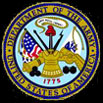


|
John
Clarence Petty, Jr.
Lieutenant Colonel
(field rank: Colonel)
168th Infantry Regiment
34th Infantry Division
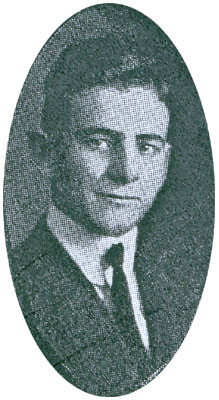 ) )
Red
Horse website
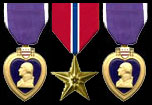
Purple Heart, Bronze Star, Purple Heart |
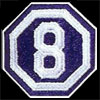

 |
|
| References |
The
comprehensive list of names from North High's 1893-2018 graduation
classes are from Claradell Shedd's North Des Moines High School
website. The names of all North High School graduates can be found
online at http://www.ndmhs.com/.
John Clarence Petty's 1923 class page can be viewed at
http://www.ndmhs.com/pages/yearclass1923.html. |
|
| Died:
02/12/43; Tunisia. Buried in Des Moines, IA; Highland Memory Gardens;
1947-48. |
| Music:
"You Raise Me Up" |
Home
|
Back/allyears |
WWI |
WWII |
Korea |
Vietnam |
Afghanistan/Iraq |
Lyrics
|
Refs/Awards |
Contact
©2023-csheddgraphics All rights reserved.
All images and content are © copyright of their respective copyright
owners. |
|












 )
)


